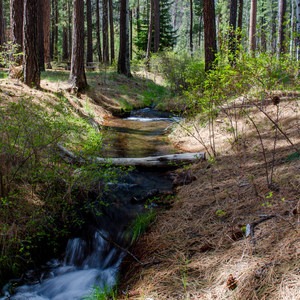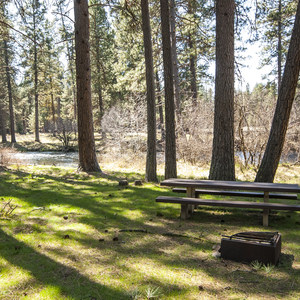The Camp Polk Meadow has long been a unique wetland oasis in the Central Oregon high desert landscape, and fortunately nearly all of the 151-acre meadow has been under the protection of the Deschutes Land Trust since 2000.
The meadow encompasses a roughly 1.5 mile stretch of Whychus Creek, one of the Deschutes River's primary tributaries. Prior to alteration by ranchers as early as the 19th century, the meadow was the most active riparian area for salmon and steelhead spawning along the Whychus.
Camp Polk, located on the western edge of the meadow and built in 1865, was one of nine army outposts in the District of Oregon intended to protect settlers against conflicts with Native Americans. Specifically, its location and primary function was to oversee safe passage on the Santiam Wagon Road, a freight and toll road that was originally the primary route between the Willamette Valley and Central Oregon. With no native conflicts, however, the camp was ruled obsolete and was disbanded a year later in 1866. Not long after, the meadow was used for ranching and settlement by the Hindman family, and their barn built in 1871 still stands as the oldest structure in Deschutes County.
Today, after being saved from residential development and after impressive restoration efforts, visitors to the meadow will be awed by the impressive collection of birds and wildlife that call this desert sanctuary home, not to mention the tall stands of ponderosa pines, groves of aspen, and willow shaded springs.
Note: The western edge of the meadow is open year-round to visitors, but to hike and explore the majority of the preserve you must be accompanied by guided tours provided by the Deschutes Land Trust.











Comments
Sign In and share them.